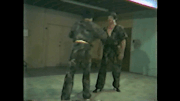MadMartigan
Blue Belt
Is one of the main purposes of the belt testing system through an organization to circumvent issues inherent within the lineage system?
Many arts (wing chun for instance) place a great deal of value on lineage while almost never using a belt system. Others (like Karate and Taekwondo) are often generalized by large organizations with little attention paid to lineage. Then there are arts like Brazilian Jiu-Jitsu where the belt system still seems very closely tied to lineage (especially after black belt).
I'm sure everyone has their preference of which system works best for them. Having been bitten by the shortcomings of each version, I am interested in looking at these styles academically.
If you subscribe to (or see large issues with) one of these methods, what is it that makes it work/not work for you?
Is lineage better for quality control?
If so, what happens if your instructor leaves, dies, or has a falling out with you?
Does testing through an organization correct this, or do the downsides (lack of connection, administrative bloat, etc) outweigh the benefits?
Many arts (wing chun for instance) place a great deal of value on lineage while almost never using a belt system. Others (like Karate and Taekwondo) are often generalized by large organizations with little attention paid to lineage. Then there are arts like Brazilian Jiu-Jitsu where the belt system still seems very closely tied to lineage (especially after black belt).
I'm sure everyone has their preference of which system works best for them. Having been bitten by the shortcomings of each version, I am interested in looking at these styles academically.
If you subscribe to (or see large issues with) one of these methods, what is it that makes it work/not work for you?
Is lineage better for quality control?
If so, what happens if your instructor leaves, dies, or has a falling out with you?
Does testing through an organization correct this, or do the downsides (lack of connection, administrative bloat, etc) outweigh the benefits?

